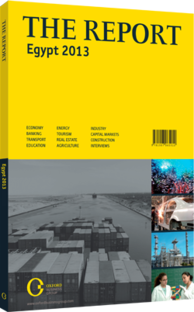Down the river: River transport is set to make a comeback as a means of moving freight and passengers
One area of the Egyptian transport sector that stands to see a new lease of life is river transport, which currently accounts for less than 1% of all goods transported within the country. Historically, the Nile was Egypt’s main transport route for millennia, but the advent of the railways and later, motorways, made river transport seem out-dated. As such, the sector suffered from a lack of investment, particularly in ports. Today, however, 95% of goods in Egypt travel on the country’s roads, which are often crumbling and increasingly dangerous. Given that some 95% of the population lives along the Nile, authorities are looking to revive the sector.
OPERATING ON THE NILE: While Egypt has a number of small-scale boat operators, they are largely informal and lack the ability to handle bulk volumes. Larger river transport companies were nationalised after the 1952 revolution, but since the late 2000s, the River Transport Authority (RTA) has acted as an infrastructure operator and regulator. Licences were awarded to the Nile River Transport Company (RTC) and Nile Cargo, a subsidiary of private equity group Citadel. The RTC works out of wharves at Maadi, while Nile Cargo operates barges down to South Sudan.
In addition to its regulatory work, the RTA also trains river captains and crew. Over the past two decades, river transport had been declining; for instance, the total number of barges fell from roughly 10,000 in 1996 to around 6500 in 2007, according to RTA figures. However, in 2010 this figure had grown to 9m tonnes, an 80% increase over 5m tonnes in 2009.
OBSTACLES: One issue facing the sector is that the Ministry of Irrigation, which is first in line to determine the Nile’s water usage, prioritises water for agricultural purposes and for domestic use, rather than for transport. Furthermore, the Nile is usually low in the winter months, which can be a problem for particularly heavily laden barges. The RTA aims to keep a 100-metre-wide, 2.3-metre-deep navigation channel upriver from the capital, as well as on the Damietta branch and the Beheiri Canal between Cairo and Alexandria. The RTA formerly used dredging to do this, but the process is expensive and can interfere with fish and the sediments that form the Nile’s fertile soil. Increasingly however, with technical assistance from Holland and Japan, the RTA is looking to use simpler solutions such as rock heads (a kind of jetty) to divert water to the middle of the river to ensure an adequate depth and flow rate. This has the advantage of being cheaper to build and maintain, and of being less invasive ecologically.
Another potential drawback to expanding use of the Nile is that the infrastructure to develop a large river transport network is not in place. Egypt has 53 small river quays or wharves, but these lack adequate infrastructure for a modern port, such as warehousing facilities and intermodal transport links. The RTA issued a tender to develop three facilities in Upper Egypt into proper ports, but found no takers, as companies complained that the upfront costs of the project were too onerous. However, the RTA is redrafting the tenders, with a view to completing a pre-feasibility study soon.
CHANGES: In addition to offering more favourable terms, however, the economics of transport in Egypt look set to change considerably over the next few years, which may well encourage further investment in river barges. The government has long subsidised the price of basic commodities, including petrol and diesel, which has put substantial strain on the state’s budget. Talks with IMF to secure a loan package have been put on hold until the military-backed interim government is recognised by the international community. However, if negotiations re-start and the IMF makes balancing the budget a condition of the loan, fuel subsidies are likely to be among the first expenditures to be cut.
Currently, around a third of the cost of barge transport is fuel, compared to around two-thirds for lorries. If diesel and petrol prices rise, the price calculation will likely change very quickly, and with it, the relative benefits of road versus river transport. As long as the infrastructure is brought up to scratch in good time, river transport could be poised to see strong growth.
You have reached the limit of premium articles you can view for free.
Choose from the options below to purchase print or digital editions of our Reports. You can also purchase a website subscription giving you unlimited access to all of our Reports online for 12 months.
If you have already purchased this Report or have a website subscription, please login to continue.

